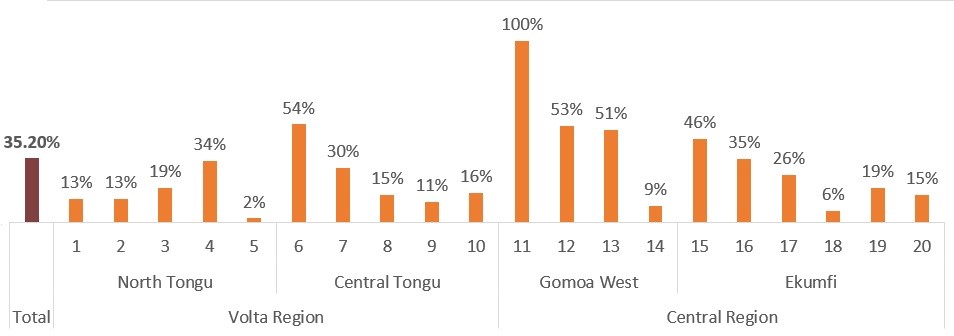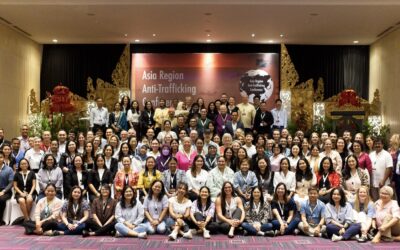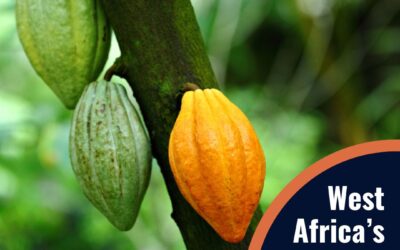Researchers have discovered significant levels of child trafficking and slavery-like conditions in 20 communities in Ghana’s Volta and Central regions. More than one-third of households studied are affected.
Teams conducted 80 focus groups, 40 interviews, 20 social mapping exercises and 1,621 household visits to establish the prevalence of child exploitation in the region. They discovered child trafficking and slavery-like conditions in every community studied, with an average of 35.2 percent of households having a victim of child trafficking or slavery-like conditions.
The research teams uncovered more than 500 instances of child exploitation in just 20 communities: 50 percent of the cases were in the fishing industry, 27 percent were cases of domestic servitude, 4 percent were cases of forced marriage, and 19 percent were other cases where children were working without getting paid.
The rate varied significantly by community (see table below). In more than 20 percent of the households surveyed, more than one child had been trafficked or sent into slavery-like conditions. One household reported 10 trafficked or exploited children.
Research Results in 20 Communities Studied
Percentage of households reporting at least one child affected by trafficking or slavery-like conditions

The study found that parents, children and other community members are very aware of the risks of child trafficking and exploitation. They know these types of work are often damaging the health of the children and that they risk losing children to the poor conditions under which they work. Community members described their desperate need for income as the core reason for trafficking their children or sending them to work in slavery-like conditions. Indeed, the majority of survivors (83 percent) were found in households that were identified as being in the lowest wealth ranking during the social mapping exercises.
The research findings will shape activities in the Free the Slaves Growing Up Free project. The governments of Ghana and the United States signed the first Child Protection Compact Partnership in 2015, aiming to support four Ghanaian government ministries and civil society in combatting child sex trafficking and forced child labor. To support compact implementation, Free the Slaves, in partnership with International Needs Ghana, has been employed to rescue and reintegrate child trafficking survivors, raise public awareness about child sex trafficking and forced child labor in selected communities throughout the Central, Greater Accra and Volta Regions of Ghana, fund and organize the provision of rehabilitative care services for child survivors of trafficking, and identify livelihood alternatives for the families of survivors. The program will be implemented in 34 communities from 2016 to 2019.
Learn more about the research, and watch videos of child trafficking on Lake Volta, including a rescue, on our Ghana webpage.



